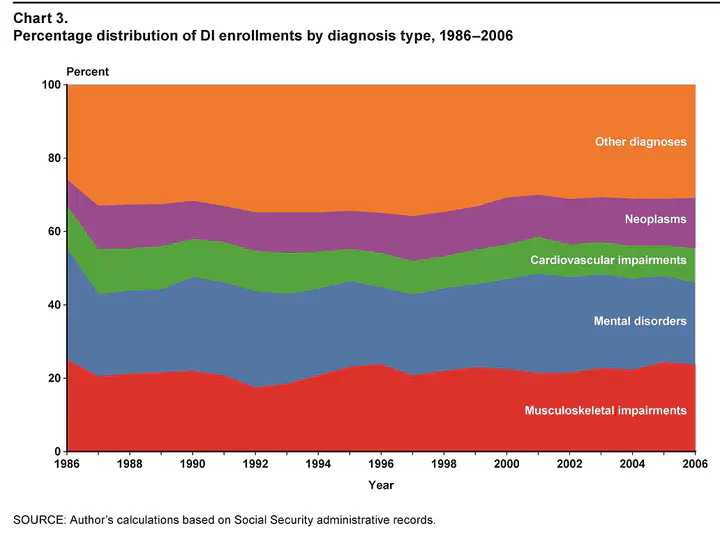Exits from Disability: Estimates from a Competing Risk Model

Abstract
This article explores the causes of growth in the number of disabled workers on the Social Security Disability Insurance (DI) rolls from 1980 through 2010 by estimating the probability of a DI beneficiary’s program exit because of recovery, death, or conversion to retired-worker beneficiary, by sex, age, and disability type. Using Social Security administrative data and a competing-risks model to estimate DI exit probabilities, I find that death is the primary reason for program exits among nearly all beneficiary subgroups during their first 9 years on the rolls. Relative to men, women have lower probabilities of exit because of death; younger women also have lower exit probabilities because of recovery. From the 1980s to the 1990s, the probability of exit because of death declined while the probability of exit because of recovery did not improve. Beneficiaries with certain impairments are noteworthy exceptions to these general outcomes.